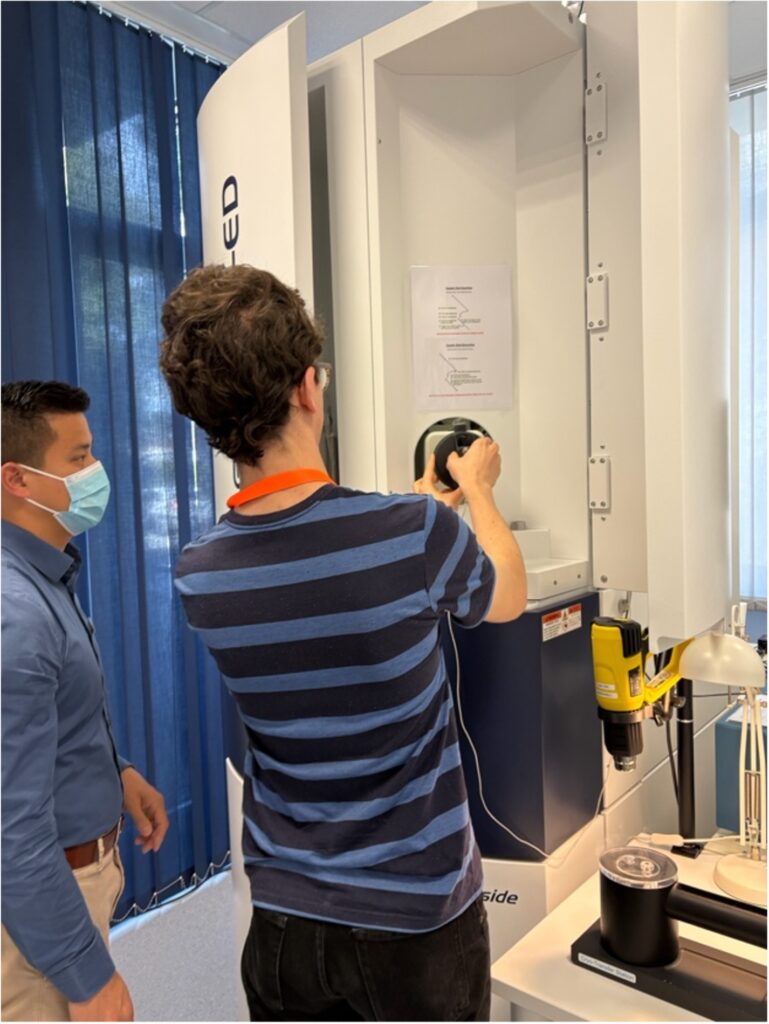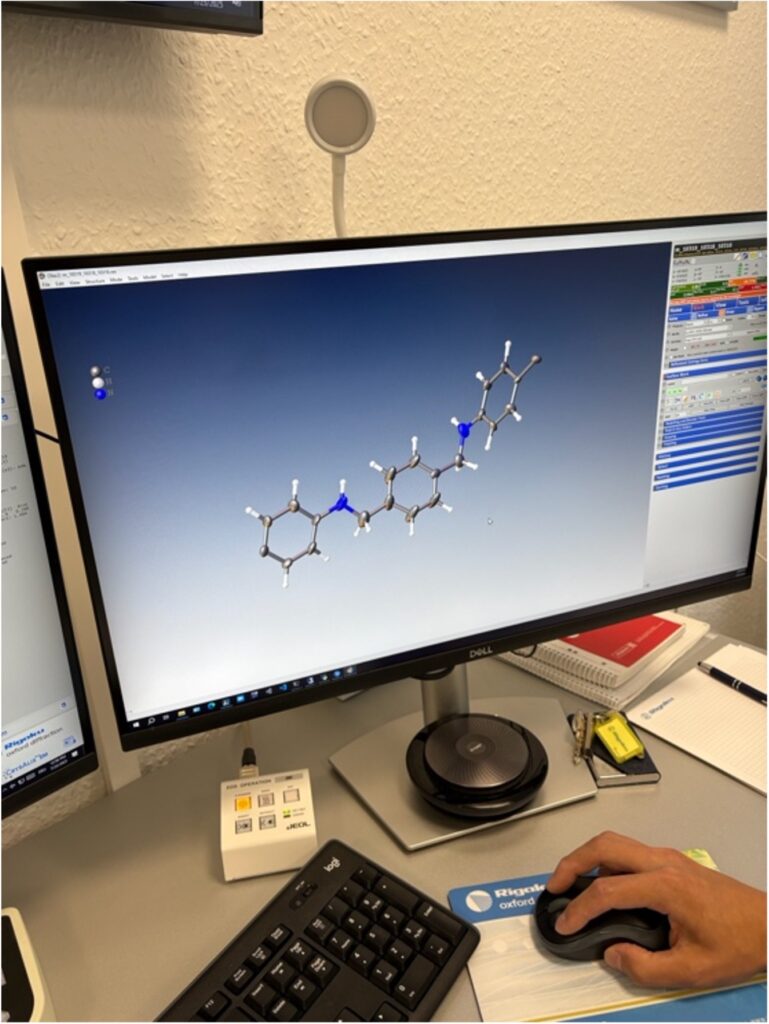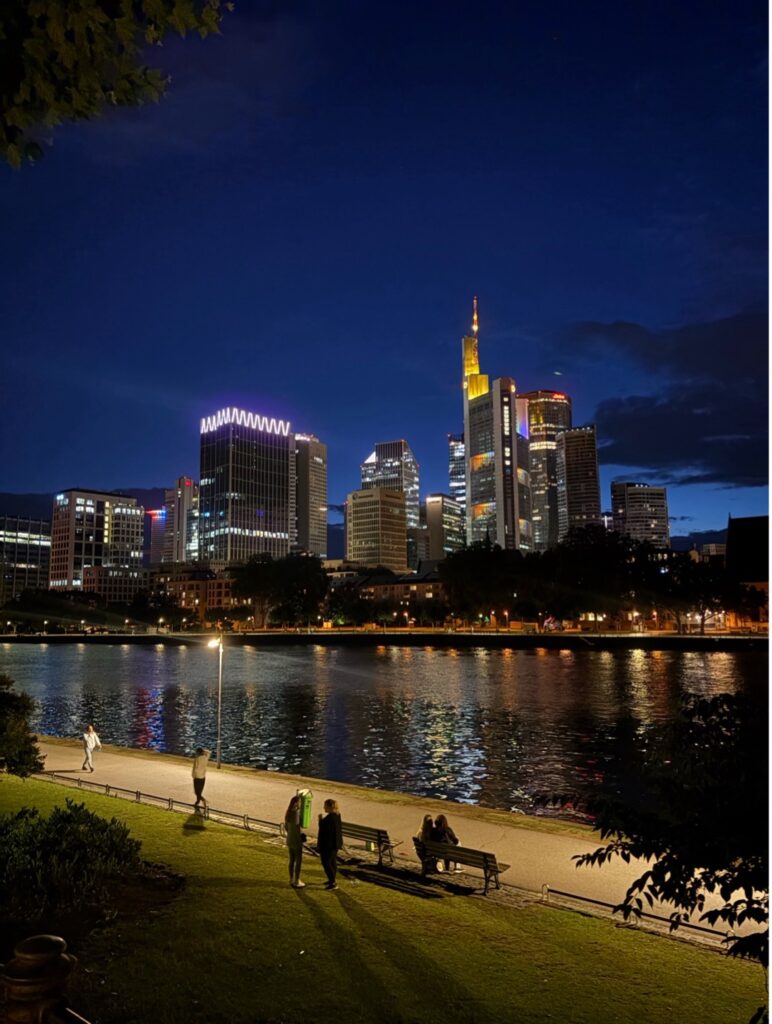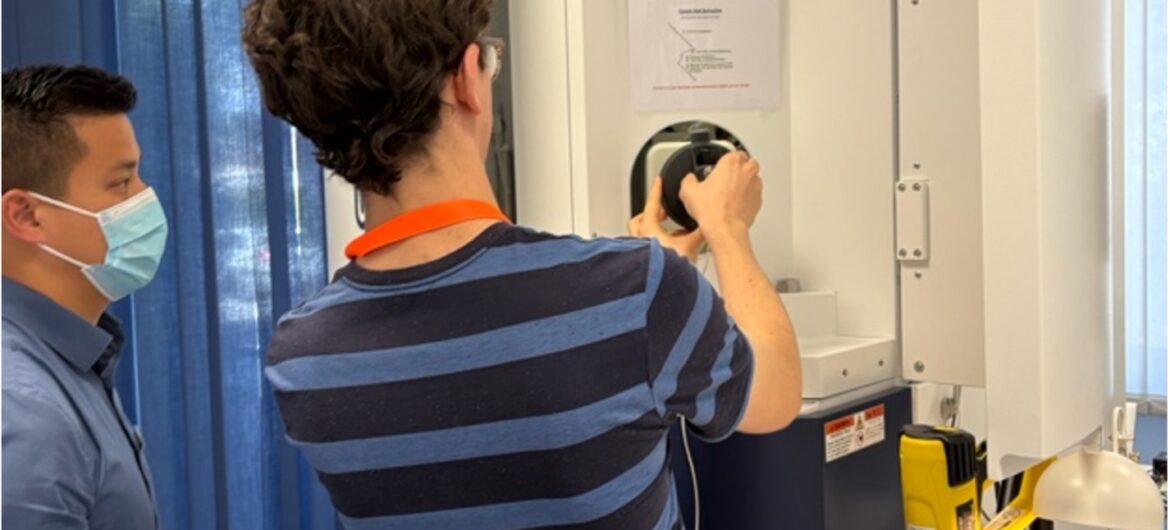Author: Will Stoll
This past week, Will Archacki, Dr. Luca Catalano, and I traveled to Neu-Isenburg, Germany to visit the Rigaku corporate office. After a quick 20-hour flight from BLQ to FRA (due to some unforeseen weather delays), Will and I found ourselves in Germany for the first time ever. We enjoyed some bratwurst and pretzels in the airport before we hailed a cab to the hotel we were staying at. During our short walk from the hotel to the office, we compared the German and Italian architecture, subsequently meeting up with the Luca and the staff scientists.
During our demo, we were trained on the Synergy electron diffractometer over a two-day period. The staff scientists provided us with lots of hands-on experience, teaching us how to select samples of the correct size and load them into the cryostat/diffractometer. From here we were able to control the temperature of the experiments, which is very important for data quality, and our systems exhibiting temperature induced phase transitions. The first difference I noticed between electron and single-crystal X-ray diffraction, was the lack of the goniometer. Here we distributed nano-meter sized crystals on a TEM grid, scanning multiple crystals of different orientations. These datasets were then combined, proving a full structural determination.
 In just this short trip, we were able to obtain structures of six different molecular materials ranging from photo-catalysts, covalent organic frameworks (COFs) to simple organic complexes. However, the versality of the instrument was not the most impressive part, it was how powerful ED is for structural determination. In just minutes, we were able to obtain complete, publishable data sets of crystals on the nanometer scale. Coming from a background in single-crystal X-ray diffraction, I was blown away by the speed and quality of the data the machine produced. The instrument even rivaled X-ray diffraction from a synchrotron source. We were able to resolve the water hydrogen positions in a hydrate with ease and determine a COF structure from one 3-minute scan, something that could have taken years a few decades ago. It is incredible how much science has advanced in such a short time.
In just this short trip, we were able to obtain structures of six different molecular materials ranging from photo-catalysts, covalent organic frameworks (COFs) to simple organic complexes. However, the versality of the instrument was not the most impressive part, it was how powerful ED is for structural determination. In just minutes, we were able to obtain complete, publishable data sets of crystals on the nanometer scale. Coming from a background in single-crystal X-ray diffraction, I was blown away by the speed and quality of the data the machine produced. The instrument even rivaled X-ray diffraction from a synchrotron source. We were able to resolve the water hydrogen positions in a hydrate with ease and determine a COF structure from one 3-minute scan, something that could have taken years a few decades ago. It is incredible how much science has advanced in such a short time.
 After our experiments were completed, Will, Luca, Dr. Khai Truong, and I went into Frankfurt where Khai took us on a tour of the city. We enjoyed a delicious dinner of schnitzel, pork knuckle, sausage, sauerkraut, and German beverages. The center was very beautiful and had an amazing view of the city skyline and the river Main. Overall, we learned about electron diffraction, German culture, and even left with some Rigaku souvenirs… and six new crystal structures!
After our experiments were completed, Will, Luca, Dr. Khai Truong, and I went into Frankfurt where Khai took us on a tour of the city. We enjoyed a delicious dinner of schnitzel, pork knuckle, sausage, sauerkraut, and German beverages. The center was very beautiful and had an amazing view of the city skyline and the river Main. Overall, we learned about electron diffraction, German culture, and even left with some Rigaku souvenirs… and six new crystal structures!





